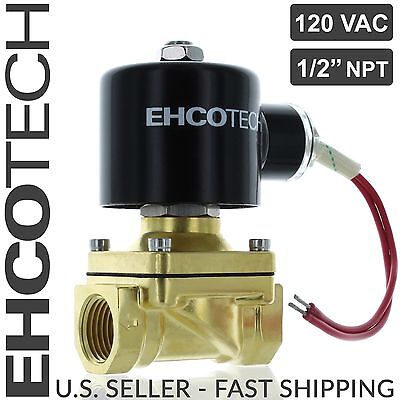I went a different route. I have a small two stage compressor in the barn/shop. The shop is plumbed. Plus there is a buried run that brings air to the house garage and carport. There are going to be minor air leaks in the system. Fact of life.
I will focus on one specific dilemma. The wife wants to be able to blow things up on demand. Garden cart tires, neighbor kids pool toys etc. If I turn it off after use, then you have to throw the breaker and charge up a 60 gallon tank. For one 4" tire. If I leave the compressor hot, it cycles on about twice a day, one of which will be, like a smoke detector battery, at 3am. If I close the outlet valve, the compressor itself is air-tight. But then the wife would have to crawl back behind the compressor each time and open the ball valve. That's a-not happenin'.
So I put an electric solenoid gate valve inline downstream of the ball valve. And wired it into the shop lights. All you have to do is open the door and hit the first light switch. Pooooooooff, manifolds are charged and you have air.
Now I just have to get used to the Poof when I open the shop after an extended off.
EHCO TECH B21V-1/2-CC-120VAC SOLENOID VALVE. Diaphragm: FKM (Viton). 1/2" NPT (female) inlet / outlet ports. Semi-Direct Acting Valve (allows for good low pressure performance and gravity feed capability).
www.ebay.com


